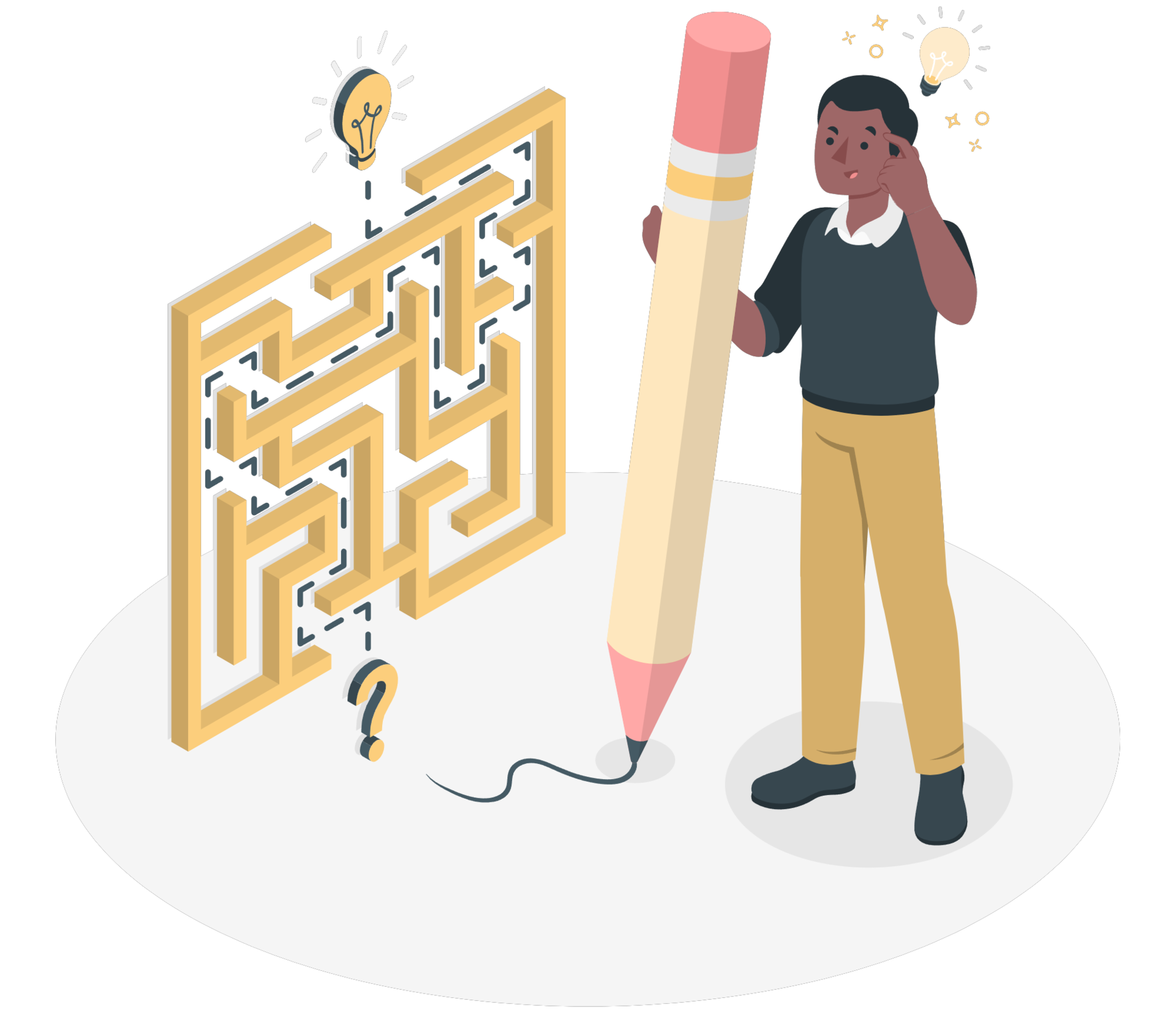When serving customers, businesses have two strategies: customer support and customer success. And while these terms may sound similar, they couldn’t be more different. They represent two distinct approaches to serving customers.
Customer support is typically focused on reactive problem-solving to address specific issues customers may encounter with a product or service. In contrast, customer success is more proactive, focusing on helping customers achieve their desired outcomes and maximizing the value they receive from a product or service.
While both customer support and customer success are important components of any successful business, understanding the differences between them can help companies better meet the needs and expectations of their customers.
So in this blog, we will try to break down the meaning, differences, and similarities between customer success and customer service and how they work together for the overall well-being of an organization. Let’s get started!
What is Customer Success?
Customer success ensures customers achieve their desired outcomes using a company’s product or service. It involves building and maintaining strong relationships with customers, understanding their needs and goals, and providing ongoing support and guidance to help them achieve success.
Customer success aims to create long-term, mutually beneficial relationships between a company and its customers. This is achieved by proactively addressing customer needs and challenges, providing proactive support and training, and measuring and optimizing customer satisfaction and success metrics.
Customer success is proactive and focused on helping customers achieve their goals and get the most value from a company’s product or service. Now let’s look at what customer support is!
What is Customer Support?
Customer support or service is assisting and resolving issues for customers who have questions or problems with a company’s product or service. It involves addressing customer inquiries, troubleshooting technical issues, and resolving complaints or concerns.
Customer support aims to ensure that customers have a positive experience and are satisfied with a company’s product or service. This is achieved by providing timely and effective support, answering customer questions, and resolving issues in a friendly and professional manner.

Customer support can be provided through various channels like phone, email, chat, social media, or in person. It is essential to the customer experience and can greatly impact customer loyalty and retention. Effective customer support requires knowledgeable and skilled staff, efficient processes, and a customer-centric approach.
Customer success and customer support are two functions within a business that are focused on ensuring the satisfaction of customers. However, they have their differences. Let’s dig a little deeper and find out what they are!
Customer Success Vs Customer Service: The Differences
1. Focus
Customer success and customer support are two distinct functions that have different focuses.
Customer success is centered on helping customers achieve their goals and derive value from the product or service. It’s mainly aimed at helping customers achieve their broader business goals. Customer success teams work proactively with customers to ensure they get the most out of their investment for growth and optimization. For example, customer success teams may routinely conduct checks to form bonds, learn about customer goals, and offer advice and training to accomplish them.
In contrast, customer support is narrowly centered on specific customer problems. It focuses on addressing customer issues and concerns. Customer support teams are reactive in nature and respond to customer inquiries, complaints, and issues as they arise. Here, a customer has to reach out for help, and the support team will immediately address the problem.
2. Goals
The goal of customer success is to ensure customer satisfaction, retention, and advocacy. Customer success teams aim to help customers achieve their desired outcomes and derive maximum value from the product or service. This is done by developing personalized strategies, providing ongoing guidance and support, and building strong customer relationships.
On the other hand, the goal of customer support is to resolve customer issues and provide a positive customer experience. Customer support teams focus on resolving specific customer issues quickly and efficiently, which can help to improve customer satisfaction and loyalty.
3. Approach
Customer success takes a proactive approach to customer engagement. Customer success teams work closely with customers to identify their goals, challenges, and opportunities and develop personalized strategies to help them achieve their desired outcomes. This may involve providing ongoing training and support and monitoring and analyzing customer usage data to identify areas for improvement.
In contrast, customer support takes a reactive approach, responding to customer inquiries, complaints, and issues as they arise or after. Customer support teams are focused on providing quick and efficient solutions to customer problems rather than proactively identifying potential issues or opportunities for growth.
4. Skillset
Customer success professionals are skilled at building relationships, understanding customer needs and goals, and developing strategies to help customers succeed. They have strong communication, analytical, and problem-solving skills and can collaborate effectively with cross-functional teams to achieve customer goals. Customer success teams must possess the emotional intelligence to deal with customer problems. However, they focus more on preventing potential issues than solving existing ones.
On the other hand, customer support professionals are skilled at issue resolution, troubleshooting, and customer service. They frequently assist customers who are upset or anxious in resolving intricate issues. In addition to technical expertise, these professionals require emotional intelligence to remain composed during highly stressful interactions. The essential skills for customer service include empathy, patience, proficiency in product knowledge, and verbal and written communication skills. They can communicate clearly and effectively and work efficiently to resolve customer issues.
5. Timing
Customer success is a continuous process that starts from the onboarding stage and continues throughout the customer’s lifecycle. It is mainly aimed at building long-term relationships with customers. Customer success teams work with customers to ensure they achieve their goals and get the most value from the product or service. This involves ongoing customer communication and engagement, regular check-ins, and progress reviews.
On the other hand, customer support is a reactive function triggered by customer issues or inquiries. It is mainly aimed at resolving a short-term concern or issue. Customer support teams are typically available on-demand to assist whenever a customer needs it.
6. Metrics
Customer success teams measure success based on customer satisfaction, retention, and advocacy metrics. They focus on long-term outcomes and building strong relationships with customers. These metrics help to demonstrate the value of the product or service to customers and can help to drive long-term growth and success.
On the other hand, customer support teams measure success based on metrics such as response time, resolution time, and customer satisfaction with issue resolution. They focus on resolving immediate customer issues and providing a positive customer experience, which can help to improve customer loyalty and customer retention.
7. Business Impact

Customer success is a value-added business function. Typically, it involves working closely with customers to ensure they use the product/service to its full potential and receive maximum value from it. Customer success teams are responsible for identifying opportunities for upselling and cross-selling, which can drive revenue and expansion for the business. They also provide valuable feedback to the product development team, helping to improve the product/service based on customer needs and feedback.
Customer support is essential to running a successful business because it helps ensure customer satisfaction, which is crucial to building brand loyalty and driving revenue. Customer support teams play a vital role in addressing customer concerns and resolving issues, whether it’s related to product/service inquiries, technical problems, or complaints. They act as customers’ first point of contact, providing assistance and guidance throughout the customer journey. A well-trained and efficient customer support team can improve customer retention rates, increase customer loyalty, and generate positive word-of-mouth marketing.
Although we have established that customer success and customer support have different objectives, the two have several similarities. Let’s take a look at what they are!
Read More: Reasons Why You Should Write a Business Plan!
Customer Success Vs Customer Support: The Similarities
1. Customer-Oriented
A customer-oriented approach is the foundation of customer success and customer support teams. These teams aim to understand the needs and expectations of customers and help them achieve their desired outcomes. They work to build positive relationships with customers by delivering timely and effective solutions to problems. By focusing on customers’ needs, success, and customer support, teams help build customer loyalty and satisfaction.
2. Communication
Effective communication is essential for both customer success and customer support teams. After all, communication is always the key! They must understand and address customer needs through various communication channels. Both teams must be skilled in active listening and using appropriate language to ensure that customers feel heard and understood. Communicating effectively can help customers feel valued and build a positive relationship with them.
3. Problem-Solving

Customer success and customer support teams identify and resolve customer problems. They are trained to diagnose the root cause of an issue and develop effective solutions. Both teams should have strong problem-solving skills and be able to think creatively to develop solutions that meet each customer’s unique needs. They help build trust and establish a positive customer relationship by addressing customer problems.
4. Relationship-Building
Lastly, building strong customer relationships is a priority for customer success and customer support teams. They aim to establish trust and rapport with customers by providing personalized support and demonstrating a genuine concern for their success. By developing strong relationships, they help build customer loyalty and satisfaction. And at the end of the day, both teams must understand each customer’s unique needs and provide tailored solutions to help them achieve their goals.
Wrapping Up!
Customer support and customer success are two related but distinct concepts essential for the success of any business that offers products or services to customers.
While customer support and success have different objectives and approaches, they are complementary in that they both play important roles in ensuring customer satisfaction and loyalty. Customer support can help address immediate issues or concerns that customers may have, while customer success can help customers achieve their long-term goals and get the most out of a product or service.
By working together, customer support and customer success teams can create a seamless experience for customers, providing them with the assistance and guidance they need to be successful with a product or service. This can help build strong customer relationships, increase customer loyalty, and ultimately lead to greater business success.
Further Reads:
Customer Segmentation: Definition, Importance, Types & Process
9 Customer Acquisition Strategies Your Boss Wishes You Knew!
Customer Journey Map: Definition, Importance, and Process!
Customer Journey vs Buyer Journey: The Key Differences!
Customer Marketing: Definition, Benefits & Strategies!

Related posts
Bit.ai | Watch to Learn More
What is Bit.ai?
Bit.ai is an innovative AI-driven knowledge and Document Managment suite designed to empower knowledge workers by streamlining the creation of, documents, wikis, and notes. With an intuitive interface and seamless integration, Bit.ai acts as a versatile assistant to help you collaborate, generate, organize, and visualize your ideas effortlessly. Whether you are drafting a report, managing a project, collaborating with your team or clients, or brainstorming new concepts, Bit.ai brings intelligence and creativity to every aspect of your work process.


